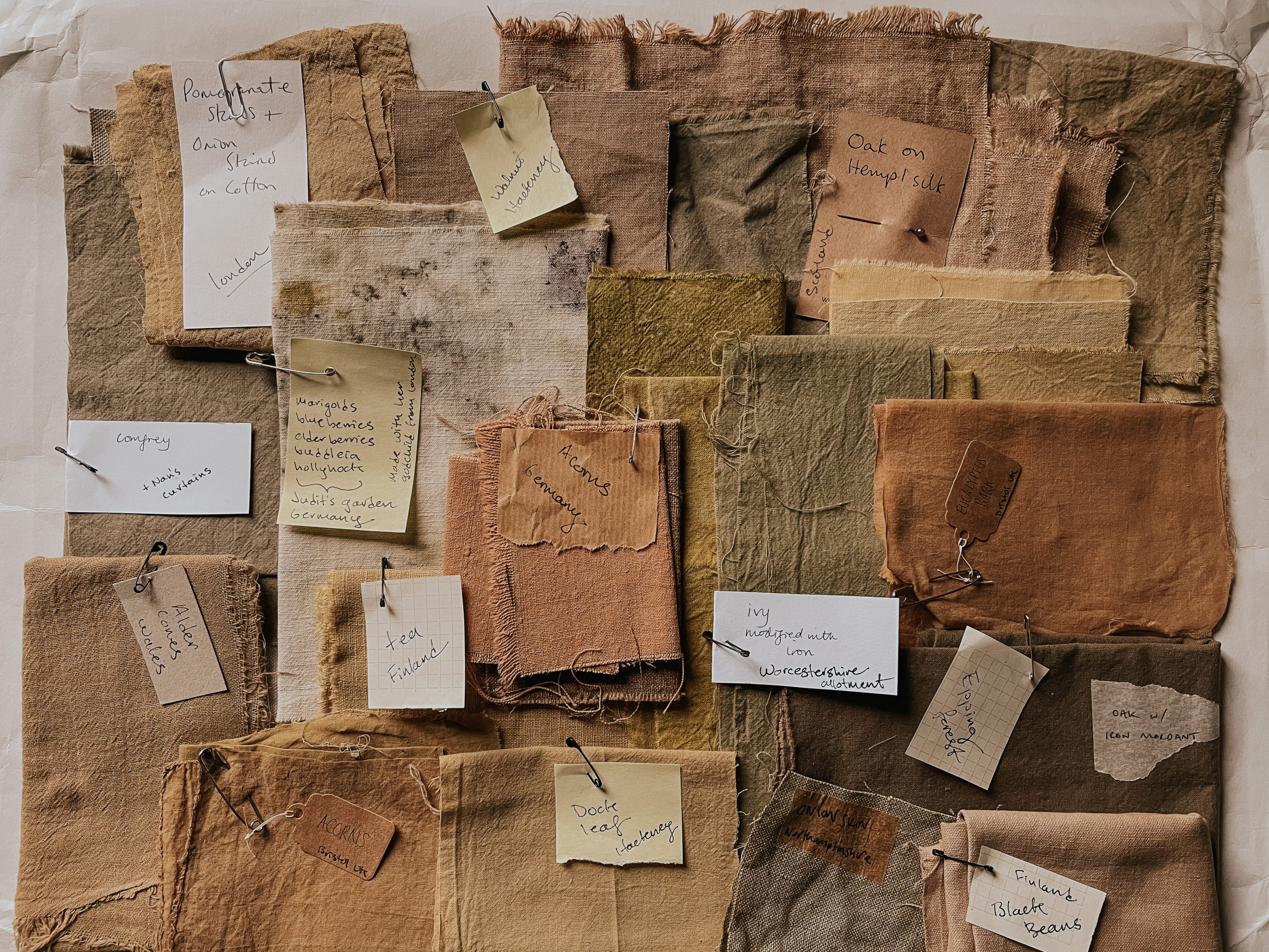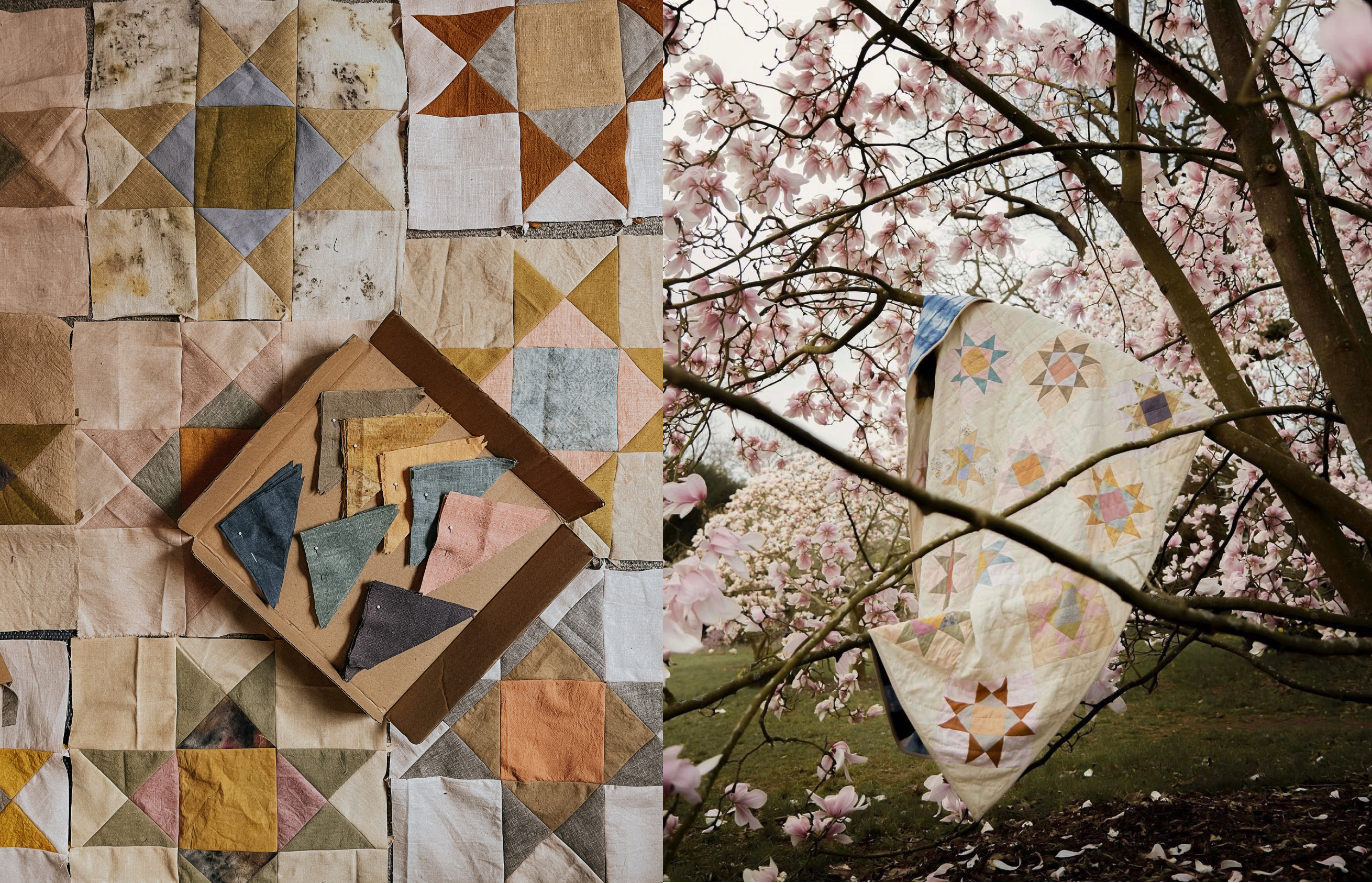
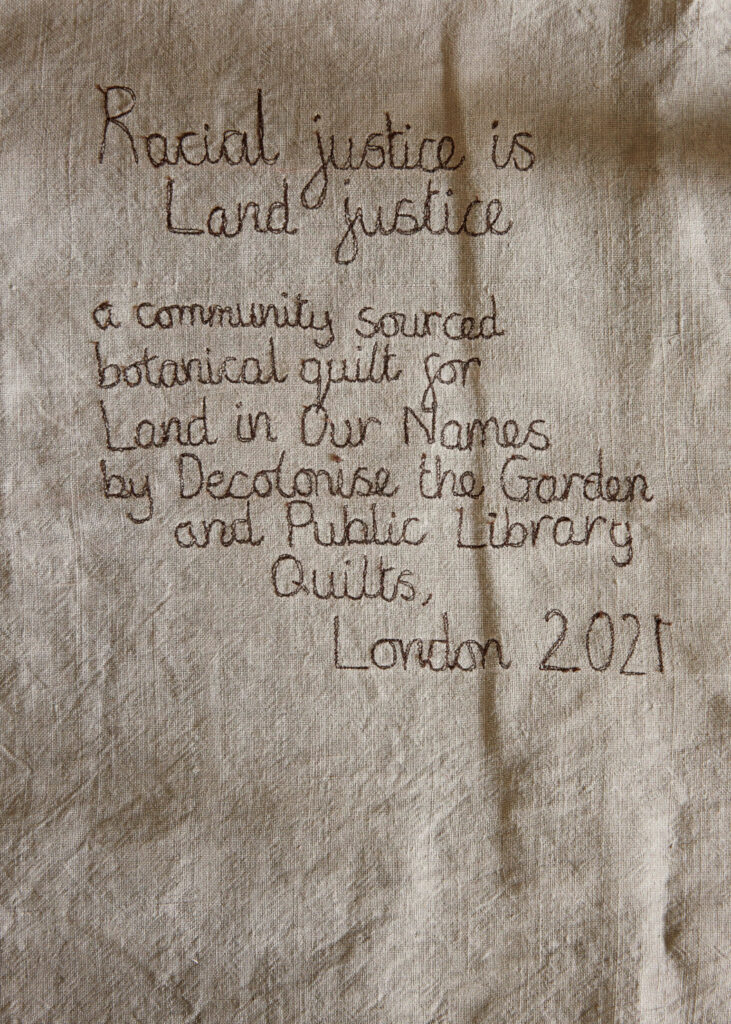
In late November of 2020 the packages started to arrive. Some fit in the palm of my hand, envelopes stuffed to bursting. Others were much larger than I expected, heavy bundles taped securely. All of the packages had the same text scrawled across them: “fabric donation!” with many adding “thank you postal workers!” or “good luck quilters & love to Land in Our Names!” I sat in my apartment opening more than fifty of these packages, my hands filled with every imaginable hue of nature, each one captured in cloth.
The packages contained fabric dyed only with plants, donated by home-dyers and professionals from eleven different countries. Yellow made with cypress bark from France and earthy walnut linen from Scotland. Soft pink onion and avocado-dyed recycled silk from North Carolina and joyful orange coreopsis from Wales. Purple made with logwood grown in rural Germany, and rich green Ivy mordanted with iron from an allotment in Worcestershire, England. My task was to make a quilt out of these fabrics as a fundraiser for Land in Our Names, a UK based initiative working for land and racial justice.
I am inspired by art that cultivates community, connecting people across skills to realize a common purpose. While I work as an art historian, on the weekends I quilt with traditional hand-quilting techniques. Moved by the rich history of quilting for social change, I wrote to Sui Searle, a gardener whose social media account, Decolonise the Garden (@decolonisethegarden) promotes anti-racist dialogue. I asked her if we could collaborate. This is the story of how two people can make a quilt together during a pandemic without ever having met in person.
For Black people and people of colour living in the U.K., access to land and green space is blockaded by systemic racism and the lingering ramifications of British Colonialism. Horticulture and farming rank as two of Britain’s least diverse professions. A recent study has shown that communities of colour are 60% less likely to have access to nature, compared to their white counterparts.
QUILTS ARE GOOD AT HOLDING STORIES, EVEN DIFFICULT ONES. NO MATTER HOW LUXURIOUSLY A QUILT MAY HAVE BEEN MADE, IT IS STILL FUNDAMENTALLY A USEFUL OBJECT THAT OFFERS CARE AND SECURITY. LIKE THE SURFACE OF LAND TENDED BY WILLING HANDS, A QUILT PROVIDES REGENERATIVE CARE AS IT IS PASSED DOWN THROUGH GENERATIONS.
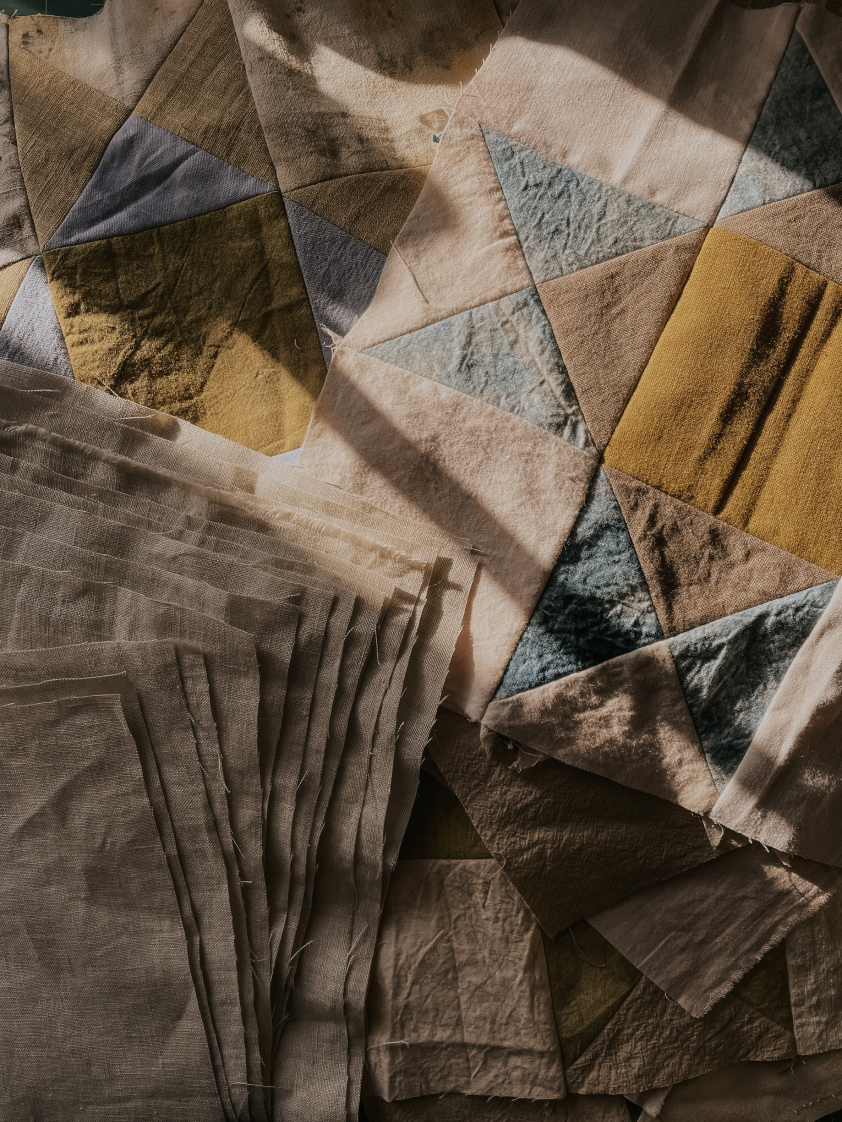
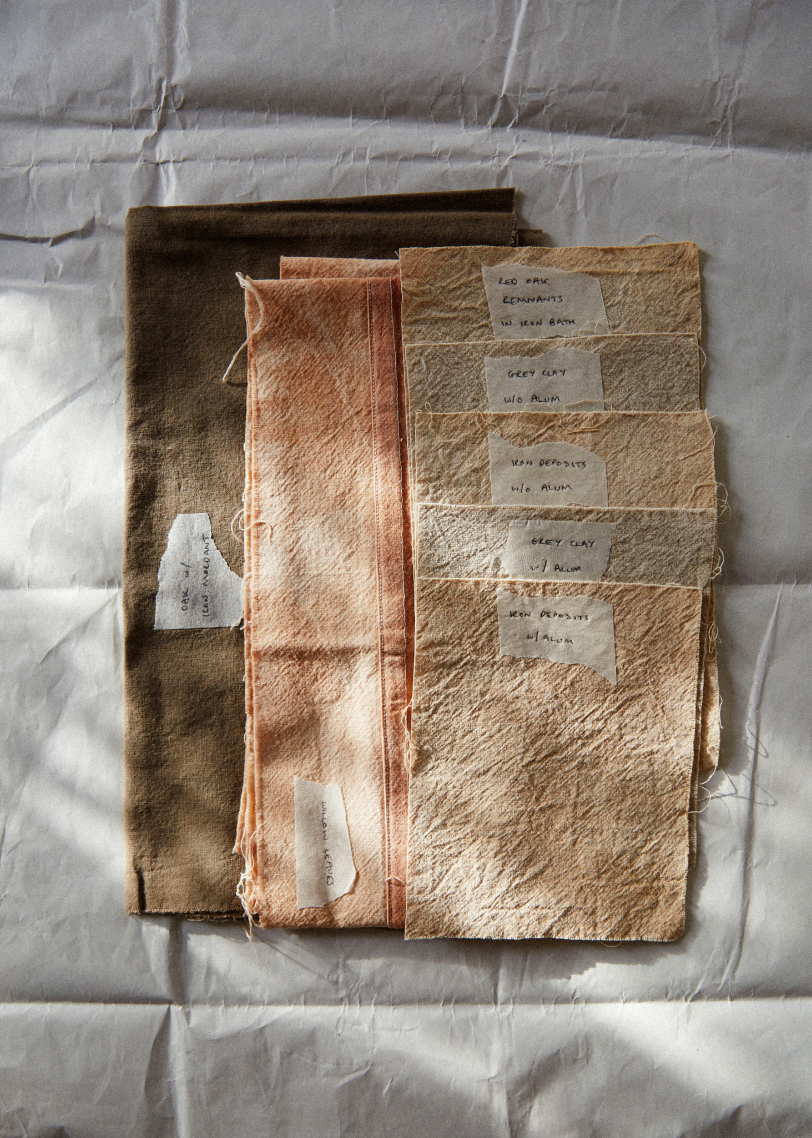
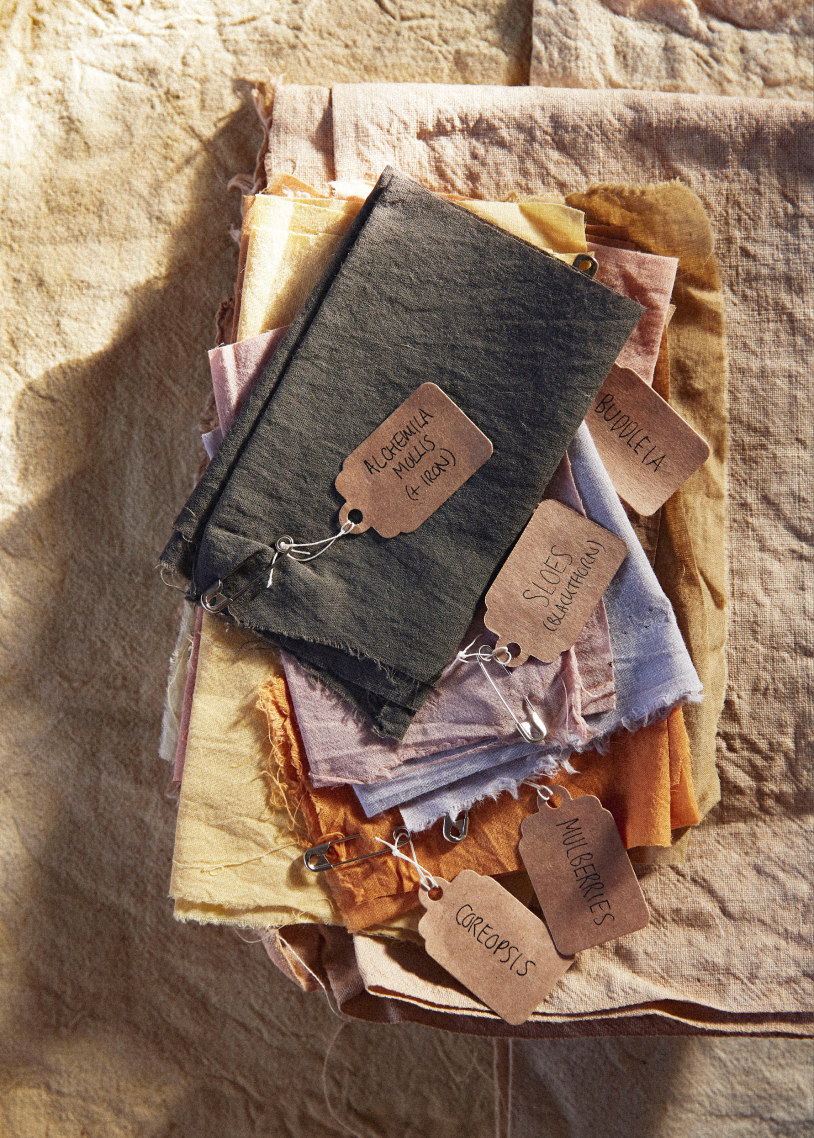
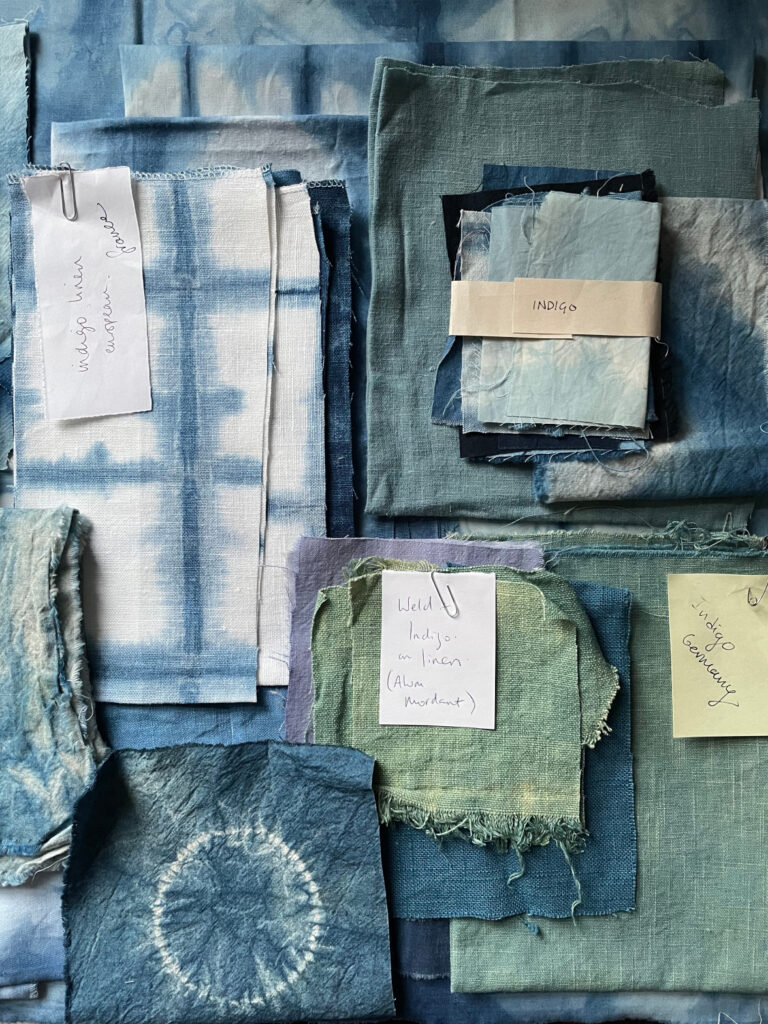
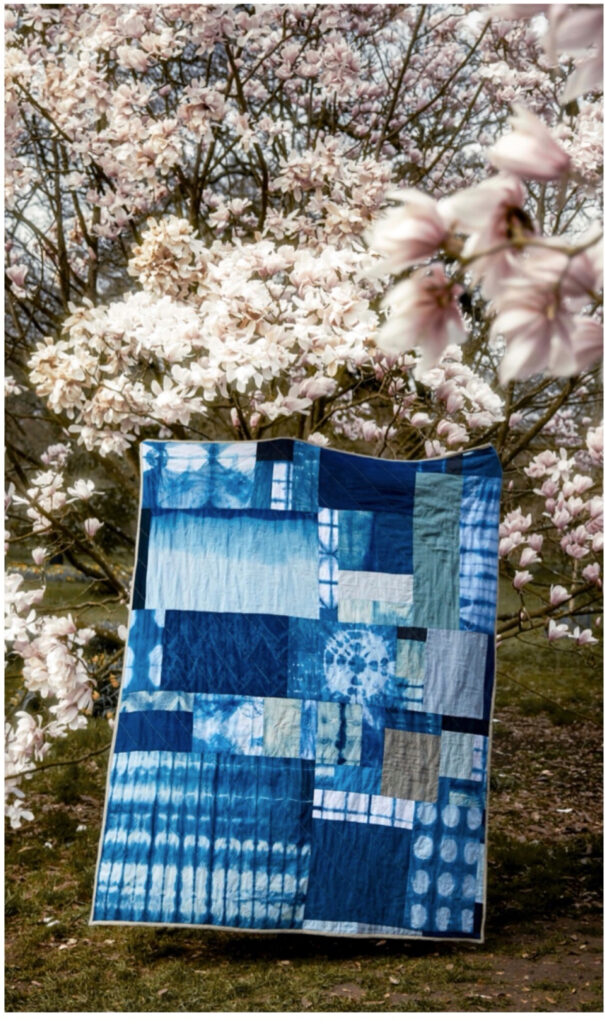
“Access to land provides a connection with the natural world, to food sovereignty and to health, as well as nurturing a sense of home and belonging,” says Searle. She continues, “Racial justice is intertwined with land justice. For people who have a history of being colonised or subjugated, had land stolen from them or were stolen from their land – access to land is a path to healing, repair, and equity.” Activists like Searle advocate for diversity in farming and gardening, reparative redress for these intergenerational traumas.
Searle and I bonded over our shared conviction that any skill set, unique interest, or knowledge base can be put to work for anti-racism. We began by exchanging resources we were learning from. The more we spoke about our two passions, gardening and quilting, the more we felt our collaboration could raise tangible resources for initiatives centering the regenerative community care made possible through having access to land. Quilting traditionally celebrates collective artistic work, and has–across history–offered occasions of collective healing. Searle suggested that gardeners could contribute to a quilt’s color through plant dye.
Unable to gather in person during the pandemic, we engaged our communities (gardeners, quilters, growers, and artists) through sources of colour found only by tending the earth. With the help of florists Iona Mathieson and Romy St. Clair, packages of fabric began to accumulate at Sage Flowers in London. Making a quilt from the generosity of home dyers and growers felt like a politically reparative and galvanizing collective act.
Our project culminates this Spring in a fundraiser and quilt draw to raise funds for Land in Our Names (@landinournames), a Black-led collective working towards land and racial justice. Land in Our Names reimagines the potential of land stewardship in the U.K., seeing access to land both as reparations and as a path to greater food security for marginalized communities. The collective helps connect BPOC farmers in Britain with financial resources, knowledge networks, and professional training.
The collective sees harm to the earth and harm to people as problems best solved together. They uplift the work of communities who have direct experience of food insecurity and ancestral knowledge about sustainable land care. The funds raised by our quilt draw will support the launch of a sequence of grants to address challenges exacerbated by the pandemic. These grants for BPOC farmers in the U.K. will help to sustain farms and community gardens working towards racially equitable food systems. You can contribute to this work by joining our fundraiser and entering your name to win the quilt before April 30th, 2021.
We have never met the majority of artists and growers who mailed us plant dyed fabric. Tenille Foreman, a Black farmer in the U.S. state of Georgia sent fabric all the way to London: “I look at natural dyeing as a pathway to liberation for myself and others. It gives us a direct connection to the natural world in a positive, ancestral way…helping us tap into those heirloom creative outlets that are largely lost outside of tribal and indigenous societies. I support Land In Our Names because they understand that having access to and owning land is such an impactful means to attaining social, racial, and economic equity.”
Natural dyer Elke Fiebig mailed us fabric from Germany. “The term land justice – I am not sure I was familiar with it before (with English not my mother tongue). But it spoke so urgently to me,” says Fiebig, who teaches plant dyeing. “I still feel the loss of the ground, the garden, that was home until my early teen years very acutely… I know as a white woman in this country I am still so very privileged in my access to land, and my sense of security in it. This need to ground myself and to live with plants is what drew me to natural dyeing years ago. And to learn about land justice and how it intersects with racial justice–in this time right now – this is like a seed planted within me, and I will make sure to take care of it. And spread it.”
As a quilter, I have never worked with such precious materials. The surface of our land quilt holds the work of many hands and the bounty of many gardens. Each eight-point star block is intentionally cut from the work of four different dyers. Each star block in the quilt is unique. Eight triangles of orange cosmos from Berlin. Four triangles of sunshine turmeric from Finland. Four squares and four triangles of soft clay deposits from England’s Norfolk Coast. And finally, a centre square of rich acorns gathered from Epping Forest on the outskirts of London. When combined, these pieces of cloth feel like a mosaic of affirmations that racial justice and land justice are inseparable.
RACIAL JUSTICE IS INTERTWINED WITH LAND JUSTICE. FOR PEOPLE WHO HAVE A HISTORY OF BEING COLONISED OR SUBJUGATED, HAD LAND STOLEN FROM THEM OR WERE STOLEN FROM THEIR LAND - ACCESS TO LAND IS A PATH TO HEALING, REPAIR, AND EQUITY.
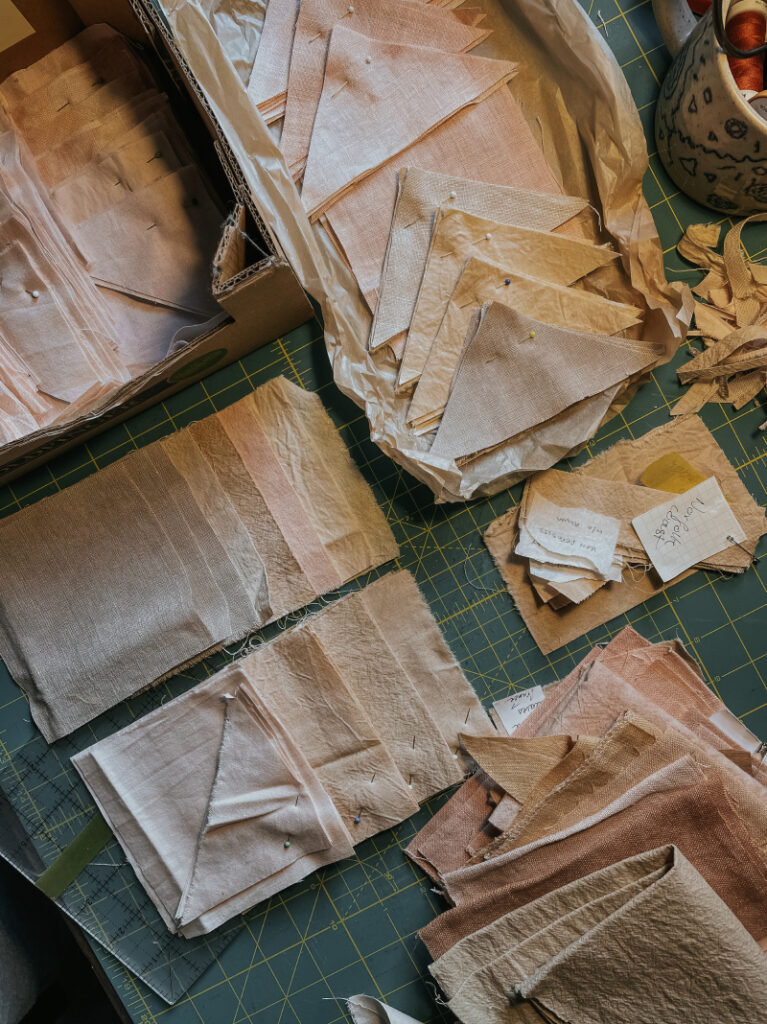
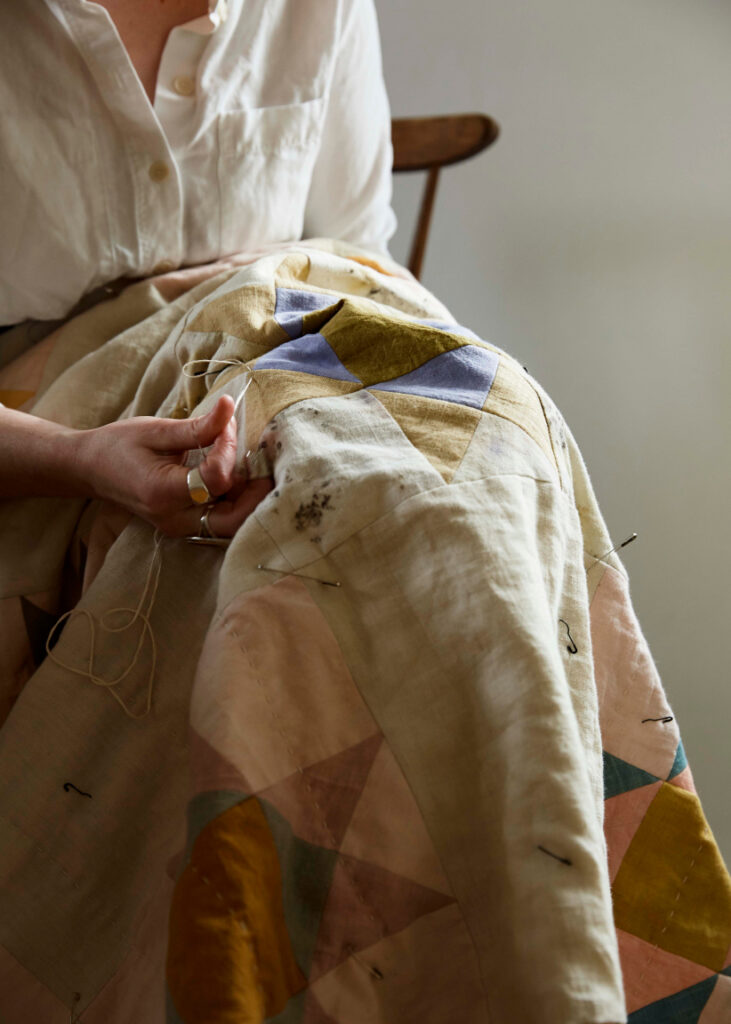
Indigo, one of the oldest and most widely used plant dye families, appeared most often in our supply of donated cloth. We received enough fabric dyed with natural indigo to make the entire back of our quilt out of this storied material. Recipes in cuneiform attest to the use of indigo to dye wool in Mesopotamia. Peruvian peoples used the dye in clothing 6,0000 years ago. The more recent history of indigo is painful. It was referred to as ‘blue gold’ during the Colonial period; and enslaved Black and Indigenous people were forced to produce the valuable dye. Their arms were often permanently stained blue.
One of our dyers, an art student in Oregon named Taylor, told us “while in my dye class, we explored the painful history of Indigo and how land was stolen and misused in order to make an exuberant profit at the high costs of people’s lives…These are the things I was reflecting on as I dyed the fabric. When the class ended, I was contemplating the best use of my newly dyed fabrics and then, by some chance, I came across the Land in Our Names quilt fundraiser. Given the journey I just had with these fabrics, I knew there was no better way to use them than to support land and racial justice.”
Quilts are good at holding stories, even difficult ones. No matter how luxuriously a quilt may have been made, it is still fundamentally a useful object that offers care and security. Like the surface of land tended by willing hands, a quilt provides regenerative care as it is passed down through generations.
At the close of our spring fundraiser for Land in Our Names, we will mail away our community sourced quilt to one lucky home. We hope that our plant dyed quilt has a life as vibrant as the fabrics and intentions of its many contributors, and that it inspires commitment to racial justice wherever in the world it newly resides.
Our Spring quilt fundraiser for Land in Our Names came to a close on April 30th. Our community raised over $25,000 for land and racial justice through donations from twenty-three countries. A random number generator was used to select the lucky winner of our quilt. We hope that our plant dyed quilt has a life as vibrant as the fabrics and intentions of its many contributors, and that it inspires commitment to racial justice where it newly resides.
If you would like to support this work, you can donate to Land in Our Names at landinournames.community/support. A pdf pattern of the eight-point star block used in our quilt is available for free at publiclibraryquilts.com/fundraiser. We hope you will make a naturally dyed quilt to raise money for land and racial justice in your community, amplifying the leadership of Black, Indigenous and People of Colour.
You can learn more about our project through social media: @landinournames @decolonisethegarden & @publiclibraryquilts
